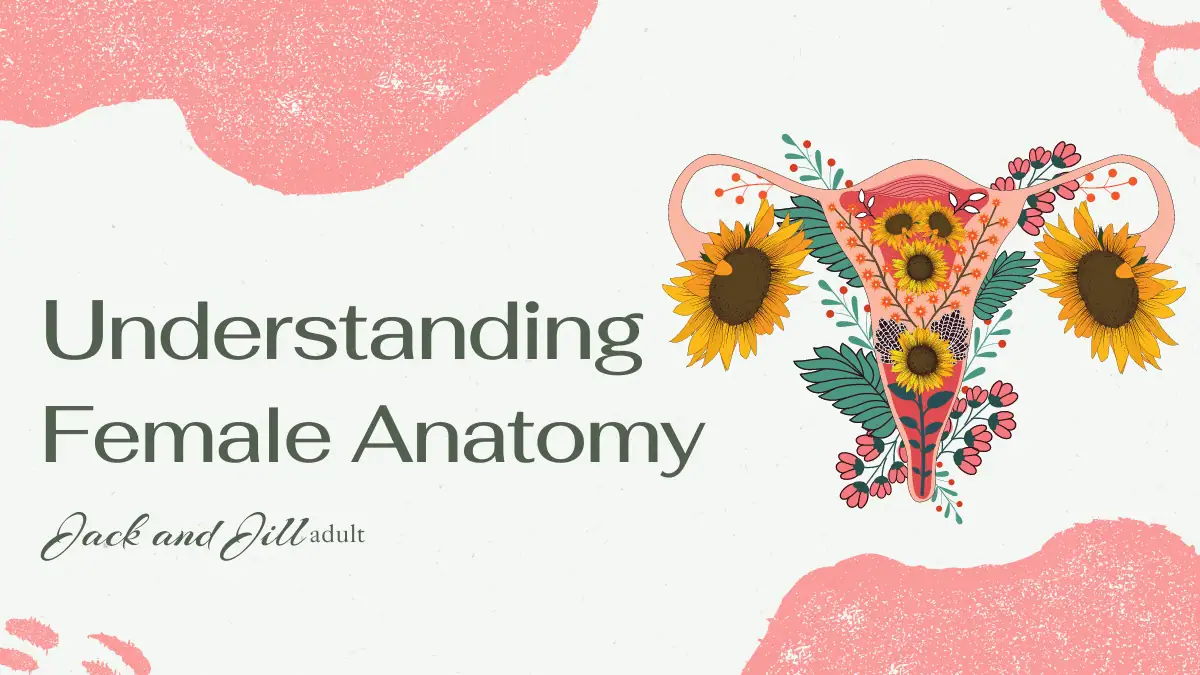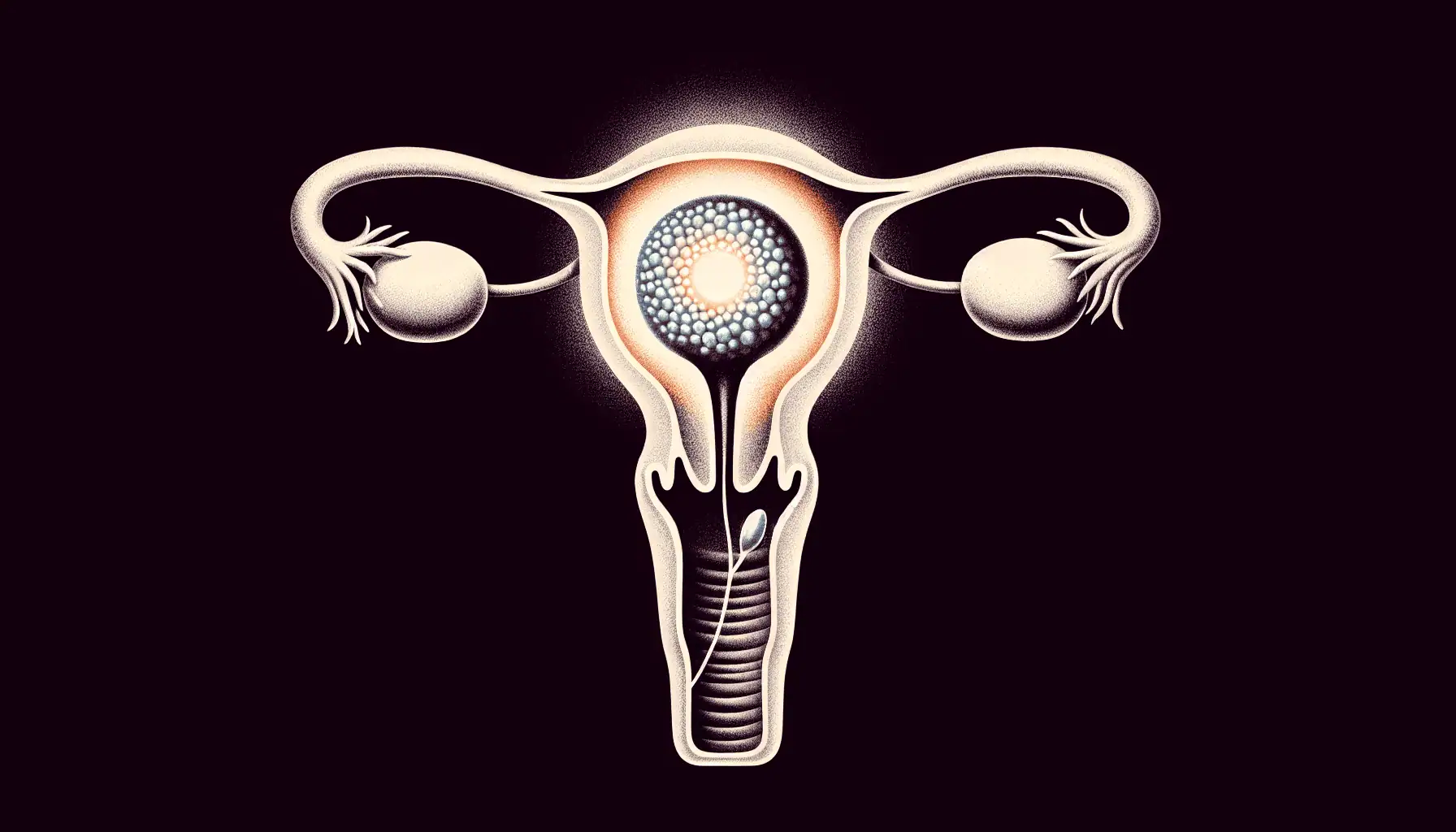
Understanding Female Anatomy
Why is understanding female anatomy crucial? Unpack the science behind the body’s reproductive wizardry without the complexities. This article provides concise, straightforward insights into how critical elements like the reproductive system, hormonal cycles, and sexual functions weave together the narrative of the female anatomy.
Key Takeaways
- The female reproductive system includes not only pivotal organs like the ovaries, fallopian tubes, uterus, and cervix, which function in sexual reproduction, fertility, and hormonal balance, but also external genitalia such as the vulva, clitoris, and labia that play critical roles in protection and sexual pleasure.
- The menstrual cycle, a recurring 28-day process, is governed by hormonal changes and involves the ovarian and uterine cycles. It orchestrates events from follicle development to potential embryo implantation or the shedding of the uterine lining if no pregnancy occurs.
- Female sexual health involves a complex interplay of anatomical and physiological responses to sexual arousal, ultimately preparing the body for the possibility of conception. At the same time, conditions like PCOS and endometriosis call for greater public understanding and healthcare access.
Demystifying the Female Reproductive System
The female reproductive system, also known as the female reproductive anatomy, is a wondrous and complex network designed for reproduction. It is composed of various body parts, each with a specific role that collectively aids in the processes of sexual intercourse, egg production, fertilization, and hormonal regulation. The heart of this system includes internal female reproductive organs such as:
- Ovaries
- Fallopian tubes
- Uterus
- Cervix
Together, these structures form an intricate ballet of biological functions, harmonizing to support the continuation of human life.
Deciphering the female reproductive system is like navigating a map of life itself. Visual diagrams clearly show the interconnectedness of the various parts, illuminating the relationships between the reproductive and urinary systems. We shall now explore the internal dynamics of this system, focusing on the ovaries and their central role in maintaining hormonal balance.
Ovaries and Hormonal Balance
Serving as the body’s natural alchemist, the ovaries convert the body’s raw materials into valuable substances that dictate the rhythms of a woman’s life. These reproductive glands are crucial for producing eggs, the genesis of potential new life, and critical hormones such as estrogen and progesterone. These hormones are the conductors of the menstrual cycle, orchestrating the ebb and flow of the body’s preparation for pregnancy.
From the onset of puberty, the ovaries are stocked with around 300,000 eggs, which dwindles with age. Each menstrual cycle, the pituitary gland releases follicle-stimulating hormone (FSH), initiating the growth of ovarian follicles, each cradling a single egg. It’s a delicate dance of nature that sustains the potential for creation throughout a woman’s reproductive years.
Journey Through the Fallopian Tubes
Picture a microscopic adventure where an egg sets out on a journey along the winding path of the fallopian tubes. These tubes are the conduits between the ovaries’ world and the uterus’s expansive realm. The journey begins with ovulation, a process triggered by a luteinizing hormone (LH) surge that cues an ovary to release an egg. Once freed, the egg enters the fallopian tube, a place of potential where life could begin if fertilization occurs.
The fallopian tubes are not just passive hallways but muscular canals that gently propel the egg toward its destiny. They are the stage where the egg may unite with sperm, a union that could mark the beginning of a new life. It’s a critical step in the complex choreography of reproduction, set within the hidden depths of the female body.
The Uterus: A Pear-Shaped Organ
Nestled between the bladder and rectum lies the uterus, a pear-shaped organ that is the cradle of human development. Here, within the nurturing walls of the uterus, a fertilized egg can implant, and a fetus can grow and flourish during pregnancy. The structure of the uterus is designed for both the protection and nourishment of developing life, a testament to the profound capabilities of the female anatomy.
At the lower end of the uterus is the cervix, an organ that could be likened to a guardian, managing access between the outside world and the inner sanctum of the uterus. The cervix plays a pivotal role in reproductive processes, permitting the entry of sperm and the exit of menstrual blood. It’s a gateway that supports the cycles of life, from conception to birth.
The External Female Anatomy Unveiled
While the internal workings of the female reproductive system are hidden from view, the external anatomy is equally fascinating and complex. The vulva is the collection of structures that form the external female genitals, including:
- the mons pubis
- the labia majora
- the labia minora
- the clitoris
These parts are not merely physical features; they serve as protective guardians for the internal reproductive organs and play a crucial role in sexual and reproductive functions.
The vulva is the first line of defense against infection, and it facilitates the entry of sperm into the vagina during sexual intercourse. It’s a multifaceted area that merges beauty with functionality, embodying the resilience and strength of the female form. Let’s explore the components of the external female anatomy and their unique contributions to protection and pleasure.
Labia Majora and Labia Minora: Protective Layers
The labia majora, also known as the outer lips, and labia minora are the twin sentinels of the female genitalia, each with distinct roles in safeguarding the body’s reproductive treasures. The labia majora house oil and sweat glands and develop hair during puberty, forming a natural barrier against external threats. Their inner counterparts, the labia minora, are delicate folds of skin encircling the vaginal and urethral openings, sensitive to touch and easily irritated due to their fragile nature.
Beyond their defensive duties, the labia minora play a role in the theater of arousal. They support sexual pleasure by spreading natural lubrication during intimate activities, enhancing the sensory experience. Like the petals of a flower, they respond to stimulation, contributing to the symphony of sensations that define sexual arousal and fulfillment.
Clitoris: Source of Sexual Pleasure
At the apex of the vulva sits the clitoris, a beacon of sexual pleasure and the source of profound sensations. This tiny protrusion, shielded by the clitoral hood, is a powerhouse of pleasure, boasting over 8,000 nerve endings that make it incredibly sensitive to stimulation. It’s not just the visible glans clitoris that plays a role in pleasure; the entire structure, including its legs and vestibular bulbs, contributes to the clitoris’s central role in female sexual response.
The clitoris’s primary function is to provide sexual pleasure, a task it performs with remarkable efficiency due to its abundance of nerve endings. It’s an organ that exemplifies the intricate design of the female body, dedicated to the pursuit of pleasure and the celebration of intimacy. Engaging the clitoris is to awaken a chorus of sensations that resonate throughout the body, affirming its status as a cornerstone of sexual health.
Vaginal Opening and Vulva: Gateways to Intimacy
The vaginal opening is the portal to the inner sanctum of the female reproductive system, surrounded by the structures of the vulva that play a pivotal role in sexual intimacy. The labia minora, with their sebaceous glands, produce lubrication to protect the sensitive tissues they enclose, allowing variations in size and shape that are as natural as the diversity of human form. This lubrication is the product of a physiological process involving increased blood flow and pressure, resulting in the formation of droplets that ease penetration during sexual intercourse.
Adequate lubrication is a key element of female sexual arousal, integral to the levels of satisfaction and enjoyment during intimate encounters. It’s a testament to the body’s ingenious design, ensuring that the pathways to intimacy are protected and primed for pleasure. The vulva and vaginal opening are more than mere physical features; they are the gatekeepers of sexual health and the enablers of deep connection.
Navigating the Menstrual Cycle
The menstrual cycle showcases the cyclical nature of the female body, with various phases that prepare for possible pregnancy, oversee the shedding of the uterine lining, and control hormonal activities. This monthly cycle includes the following phases:
- Follicular phase: This phase begins with the onset of the menstrual period and involves the development of follicles within the ovaries.
- Ovulatory phase: This phase is a critical time for fertility and includes key events related to ovulation.
- Luteal phase: This phase is marked by a distinct hormonal environment in preparation for possible embryo implantation.
With an average duration of approximately 28 days, the menstrual cycle is a marvel of precision and adaptability. It’s a complex interplay of biological processes that echoes the rhythms of nature itself. Understanding the menstrual cycle is not only about comprehending the mechanics of menstruation but also about appreciating the body’s ability to renew and prepare for the miracle of potential life.
Understanding the Menstrual Period
Menstruation is the body’s natural method of renewal, a time when the uterus sheds its lining through a process known as menstrual bleeding. This shedding occurs if an egg, having traveled through the fallopian tubes, enters the uterus but does not meet a sperm to fertilize it. The endometrium, the lining prepared in anticipation of pregnancy, is then released through the cervix and vagina as menstrual blood.
The exit of menstrual blood is facilitated by the vaginal opening, a passage that serves as a channel for this monthly cleansing. Menstruation is a physical process and a symbol of the female body’s resilience and ability to regenerate. It’s a natural part of the woman’s monthly cycle, a phenomenon connecting women worldwide in a shared biological experience.
Hormones at Play in the Woman’s Monthly Cycle
Hormones are the unsung heroes of the monthly cycle, with estrogen and progesterone leading the charge in dictating the intricacies of ovulation and menstruation. During menstruation, these hormones reach their lowest levels, setting the stage for the shedding of the uterine lining. As the cycle progresses, progesterone levels rise post-ovulation, readying the womb for a potential new life, and then fall if pregnancy does not ensue, triggering the onset of another menstrual period.
The menstrual cycle is a duet of the ovarian and uterine cycles, with the former managing the development and release of eggs and the latter overseeing the uterine environment. Hormonal ebbs and flows influence both cycles, an intricate dance that choreographs the stages of menstruation: the proliferative phase and the secretory phase.
Female hormones are the silent orchestrators of a woman’s monthly cycle, a complex symphony within the female body.
The Phenomenon of Female Arousal and Reproduction
Female arousal exemplifies the profound interconnectedness of the female anatomy, involving numerous organs and functions in a coordinated response to sexual stimuli. During arousal, women experience a cascade of physiological changes, including increased blood flow to the genital area, lubrication, and swelling of erectile tissue. These responses are not just isolated reactions; they are part of a broader reproductive narrative that encompasses sexual intercourse, conception, pregnancy, childbirth, and female ejaculation.
The arousal process is a testament to the body’s readiness for reproductive possibilities. It exemplifies the harmony between internal and external structures that work in unison to facilitate pleasure and the potential for creating new life. Engaging these mechanisms activates a series of events that can lead from the initial spark of desire to the ultimate fulfillment of reproduction.
Sexual Arousal Mechanisms
The labia minora are not just silent elements of the female body; they play an active role in the arousal process. During sexual stimulation, these delicate structures aid in the arousal of the vestibule area, which encompasses the clitoris, enhancing the overall experience. The physiological mechanisms of sexual arousal are a complex interplay that involves more than just the engorgement of erectile tissue; they also include the body’s ability to produce natural lubrication, which facilitates sexual intercourse and enhances pleasure.
Sexual arousal is a multifaceted response that prepares the body for sexual activity, invoking a series of changes that are both visible and invisible. It’s a dynamic state that reflects the body’s innate ability to respond to sexual stimuli, paving the way for intimate connections and the joys of sexual exploration. Understanding these mechanisms is crucial in acknowledging the full spectrum of the female sexual experience, which includes:
- The initial tingles of excitement
- Increased blood flow to the genital area
- Lubrication of the vagina
- Swelling of the clitoris and labia
- Heightened sensitivity and sensation
- Increased heart rate and breathing
- Muscle tension and contractions
- The crescendo of the climax
The Pathway of Sperm and Egg to Conception
The fusion of the sperm and egg marks the onset of conception, a delicate process that commences with their independent journeys toward one another.
Sperm embark on a formidable expedition, traveling through:
- the vagina
- navigating the cervix
- venturing into the uterus
- reaching the fallopian tubes, which serve as the meeting place for fertilization.
Meanwhile, the egg makes its trek, transported from the ovary into the fallopian tube, where the possibility of life awaits.
Fertilization is often a fallopian tube encounter, where sperm and egg merge to create a zygote. This newly formed entity then travels to the uterus, where it may implant and begin the incredible process of developing into a fetus. It’s a journey that epitomizes the intricacies of the female reproductive system and its profound role in the continuation of human life. This pathway from sperm and egg to conception is a narrative of potential, precision, and the delicate balance required to foster new life.
Mysteries of Female Anatomy: G-Spot and Skene’s Glands

The female anatomy harbors its share of mysteries, with the existence of the G-spot among the most debated topics. While some anatomical studies and sexual stimulation experiments suggest the presence of an area on the anterior vaginal wall linked to the G-spot, other imaging studies add to the ongoing discourse. The lack of consensus and confirmation of a denser innervation area in the vaginal walls that would correspond to the G-spot only heightens the mystery.
The implications of the G-spot’s existence are significant, impacting our understanding of female sexual dysfunction and the potential for surgical interventions. Despite the varying reports of its identification and the discrepancies in clinical studies, the conversation about the G-spot reflects the broader complexities of female sexual health and pleasure. It underscores the need for continued research and open dialogue about the elusive nuances of female anatomy.
Special Topics in Female Anatomy
Female anatomy is not only about the structures and functions but also encompasses a broader spectrum of sexual and reproductive health. It requires access to comprehensive health services and understanding to ensure holistic well-being. Conditions such as polycystic ovary syndrome (PCOS) and endometriosis demand clear resources to debunk myths and inform on symptoms and treatments. Moreover, enhancing sexual health education can ward off long-term issues by increasing awareness of infections like chlamydia and its implications on women’s health.
Effective communication is vital in fostering understanding, mainly when dealing with complex conditions such as pelvic organ prolapse. Visual aids and simple language can significantly improve comprehension among women, allowing them to make informed decisions about their health. Furthermore, specific anatomical concerns, such as labia minora hypertrophy, highlight the need for particular attention to individual variations that can affect comfort and the risk of infection. It’s a reminder of the importance of personalized care and the nuances that make each woman’s anatomy unique.
How Many Holes? Clarifying Common Misconceptions
A common but significant misconception about female anatomy revolves around the question, “How many holes?” This confusion often leads to misunderstandings regarding the structure and function of the vulva. One must acknowledge that the external female anatomy, including the vulva, is instrumental in safeguarding internal reproductive organs and facilitating reproductive functions like the entry of sperm. The vulva acts as a critical barrier, shielding the internal organs from mechanical damage and infections, thus playing an integral role in maintaining reproductive health.
Understanding these openings’ correct number and purpose is fundamental to sexual and reproductive health literacy. It’s not just about dispelling myths; it’s about empowering individuals with accurate knowledge that can lead to better health outcomes and a deeper appreciation for the beauty and complexity of the female form.
The Cervix’s Role During Sexual Health and Childbirth
Situated at the lower part of the uterus, the cervix acts as the crucial passageway linking the vagina and the uterus. During the extraordinary event of childbirth, the cervix transforms, dilating up to 10 centimeters to allow the passage of the baby through the birth canal. This dilation occurs in stages, beginning with early labor and culminating in the transition to delivery. It’s a process that showcases the cervix’s incredible ability to accommodate the birth of new life, requiring full dilation before pushing can commence for safe delivery.
Apart from its role in childbirth, the cervix has been found to:
- Contain nerve endings that may contribute to sexual pleasure when stimulated during intercourse
- Exhibit changes such as moving upwards and softening, known as the ‘tenting’ effect, to accommodate deeper penetration during sexual arousal
- Play a critical role in both sexual health and the reproductive process, highlighting its dynamic nature and importance.
Summary
Throughout this journey, we have explored the intricate tapestry of female anatomy, from the internal complexities of the reproductive system to the external marvels of the vulva. We’ve navigated the cyclical nature of the menstrual cycle, delved into the phenomena of arousal and conception, and pondered the mysteries of the G-spot and Skene’s glands. Special topics have reminded us of the importance of sexual and reproductive health and the need to dispel misconceptions about the well-being of women everywhere.
In conclusion, the female anatomy is a marvel of nature’s engineering, a symphony of form and function that inspires awe and respect. By understanding the different facets of this complex system, we empower ourselves with knowledge that transcends mere biological facts. It is a celebration of life, a testament to the resilience and beauty inherent in every woman. May this guide inspire a deeper appreciation for the wonders of the female body and contribute to a world where every woman’s health is understood, respected, and cherished.
Frequently Asked Questions
What are the main internal organs of the female reproductive system?
The main internal organs of the female reproductive system are the ovaries, fallopian tubes, uterus, and cervix, each playing crucial roles in reproduction.
How does the menstrual cycle work?
The menstrual cycle is a series of phases that prepare the body for potential pregnancy. These phases include the follicular phase, ovulation, the luteal phase, and menstruation. Each phase plays a unique role in the process.
What role does the clitoris play in female anatomy?
The clitoris plays a primary role in providing sexual pleasure as it contains over 8,000 nerve endings, contributing to the sexual response. Its parts include the glans clitoris, clitoral hood, legs, and vestibular bulbs.
What is the G-spot, and why is its existence debated?
The G-spot is a purported area on the anterior vaginal wall that some believe could be a source of significant sexual pleasure. Its existence is debated due to inconsistent anatomical evidence and varying reports of its identification in medical studies.
What is the significance of the cervix in sexual health and childbirth?
The cervix plays a crucial role in childbirth by dilating up to 10 centimeters for delivery and may contribute to sexual pleasure due to its nerve endings and changes during arousal.

